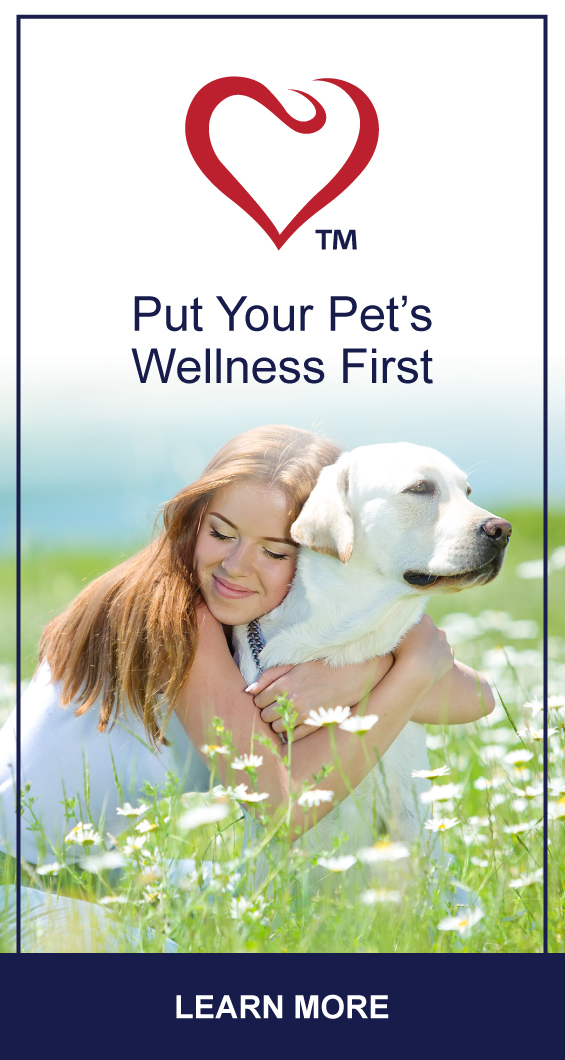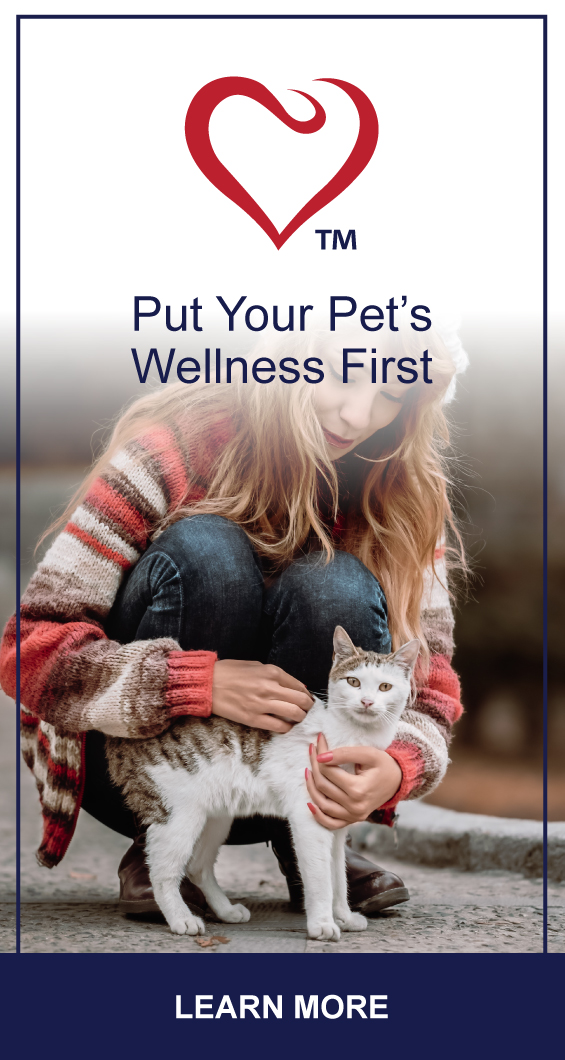HEALTH & WELLNESS

TRENDING
PAIN CAN BE CONTROLLED

Pain Recognition and Management Are Vital For Quality of Life
Pets Hide Pain
If you notice changes in your pet’s behavior or appearance, it could be because of pain. Pets usually hide their pain and cannot tell you where or how much it hurts. Untreated pain may affect the body’s functions and lead to other health complications, such as immune suppression, digestive troubles and insomnia.
Recognition of Physical and Emotional Signs of Pain
Signs that your dog may be experiencing pain include:
- Shaking or trembling
- Lack of appetite
- Displaying a sad or anxious expression
- Avoiding the use of a leg
- Avoiding stairs or movement
- Lethargic
- Not greeting you as usual
- Crouching
- Difficulty urinating or defecating
- Panting excessively
Indicators that your cat may be in pain:
- Hiding
- Grouchy behavior
- Flattening ears back
- Crouching
- Unable to jump up on a bed
- Difficulty using the litter box
- Not grooming or refusing to be groomed
- A decrease in appetite
- Aggressive behavior when touched
Types of Pain
Acute pain (usually short-term) is a predictable response to a stimulus (such as crushing or twisting) or tissue injury (such as wounds or cuts as a result of surgery).
Chronic pain (usually long-term) is associated with progressive disease, such as osteoarthritis (OA) or degenerative joint disease. OA is very common in aging pets, especially dogs, and is usually a result of the ongoing wear and tear and instability in the joints.
Pain Management and Comfort for Your Pet
NSAIDs for Pain Control
Veterinary medicine has made great progress in understanding how pets feel pain and the best ways to manage that pain. You can rest assured knowing that there are animal-specific medications that have been developed to safely and effectively deal with pain in both dogs and cats.
Nonsteroidal anti-inflammatory drugs (NSAIDs) are approved veterinary analgesic medications designed to control pain and inflammation. NSAIDs have many uses, including providing pain relief for routine or emergency surgeries, for cases of injury, and for longer term use for treating pain associated with OA in dogs and cats.
They work quickly to decrease prostaglandins (hormone-like substances) that cause pain and inflammation, and this allows pets to get back to activities and keep moving. Once pain is relieved, pets are able to exercise and systems, such as their hearts, lungs, and digestion can return to normal functioning.
When pain and discomfort can be effectively controlled and managed, pets with degenerating joints are able to exercise and muscle strength is maintained. This process helps hold their joints in better alignment, therefore, reducing pain and providing general well-being.
When pets are happy, you as the pet owner feels more at ease. If you are concerned about your pet’s pain, seek the advice of your veterinary healthcare team to develop a medical management routine suited to your pet’s needs and conditions.









